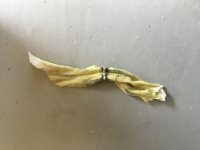B
Boomer_Mikey
Guest
I think it's time to discuss barrels... Lothar Walther 12 groove, slow and regular twist rate polygon barrels. Everyone in our club is using a Lothar Walther barrel except for our Marauder, FWB, and AA S400 MPR-FT users. A couple of us extensively tested custom .177 Lilja barrels that didn't deliver results better than Lothar Walther .177 barrels.
The latest trend are the .177 polygon barrels with JSB Monsters in slow and fast twist rates. This combination has proven to be the most accurate in our local club (Wild River) with both twist rates working well in HV. The shooters with top HV scores at our matches are using polygon barrels with Monsters followed by 12 groove barrels with Monsters and 12 groove barrels with 10.3's. Besides accuracy, polygon barrels don't seem to require cleaning as often to maintain accuracy. In a recent discussion with Mike Niksch; in his testing, polygon barrels did not require as much vertical compensation in the wind as 12 groove barrels; essentially, eliminating the need to consider vertical effects of wind on the pellet.
There has been some experimenting in our club with polygon barrels in LV with inconclusive results; so far, none of us are using polygon barrels in LV. JSB/AA 8.4's are the most popular pellet for our LV guns.
Cleaning:
Most of the .177 12 groove barrel users in our club clean between cards for the best accuracy. I was cleaning my LW SS 12 groove barrel with VFG brass impregnated felt pellets using what we call "The Dry Cleaning Method" in my EV2 with good results but recently have switched to wet patches followed with with dry patches on a 20 CAL pull through line (patchworm) resulting in better scores. This is the same method used by our top shooters with both polygon and 12 groove barrels although our choice of solvent may be different; the most popular solvent is WD-40. The 20 CAL patchworm is our most popular pull through cleaning system as it cleans the barrel with a single patch that is very tight in a .177 bore.
Have Fun,
Boomer
The latest trend are the .177 polygon barrels with JSB Monsters in slow and fast twist rates. This combination has proven to be the most accurate in our local club (Wild River) with both twist rates working well in HV. The shooters with top HV scores at our matches are using polygon barrels with Monsters followed by 12 groove barrels with Monsters and 12 groove barrels with 10.3's. Besides accuracy, polygon barrels don't seem to require cleaning as often to maintain accuracy. In a recent discussion with Mike Niksch; in his testing, polygon barrels did not require as much vertical compensation in the wind as 12 groove barrels; essentially, eliminating the need to consider vertical effects of wind on the pellet.
There has been some experimenting in our club with polygon barrels in LV with inconclusive results; so far, none of us are using polygon barrels in LV. JSB/AA 8.4's are the most popular pellet for our LV guns.
Cleaning:
Most of the .177 12 groove barrel users in our club clean between cards for the best accuracy. I was cleaning my LW SS 12 groove barrel with VFG brass impregnated felt pellets using what we call "The Dry Cleaning Method" in my EV2 with good results but recently have switched to wet patches followed with with dry patches on a 20 CAL pull through line (patchworm) resulting in better scores. This is the same method used by our top shooters with both polygon and 12 groove barrels although our choice of solvent may be different; the most popular solvent is WD-40. The 20 CAL patchworm is our most popular pull through cleaning system as it cleans the barrel with a single patch that is very tight in a .177 bore.
Have Fun,
Boomer
Last edited by a moderator:


